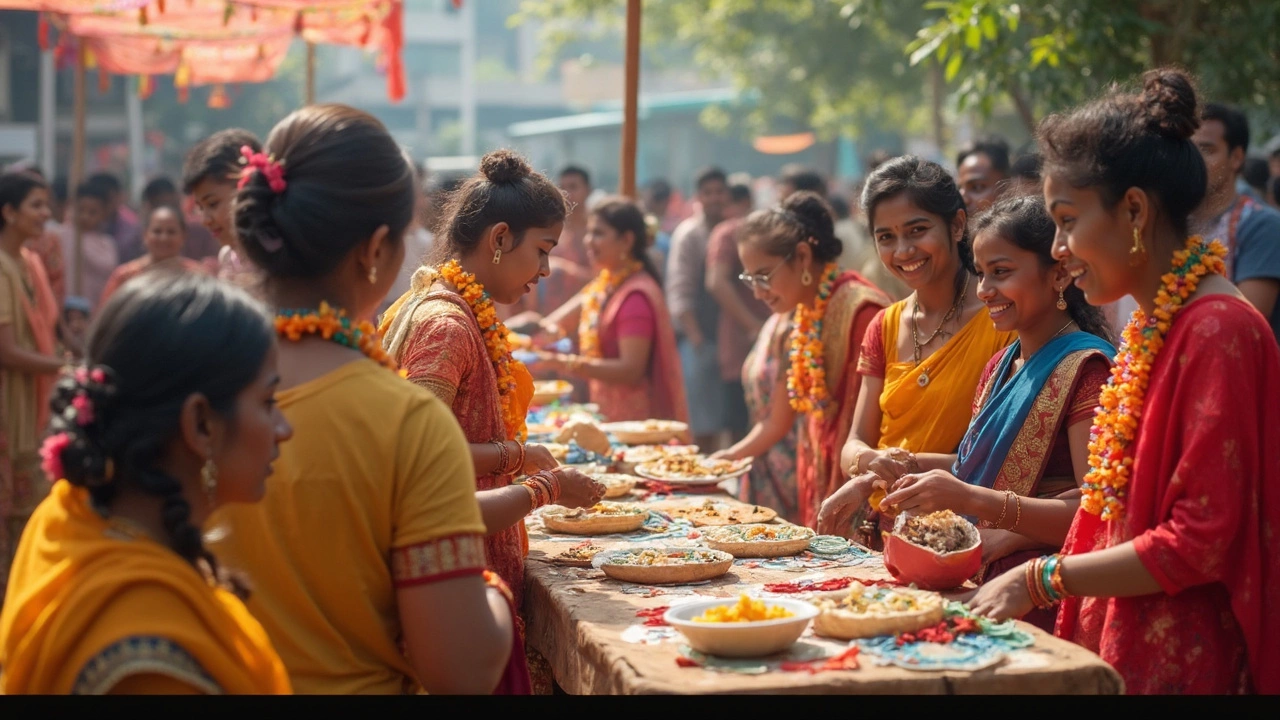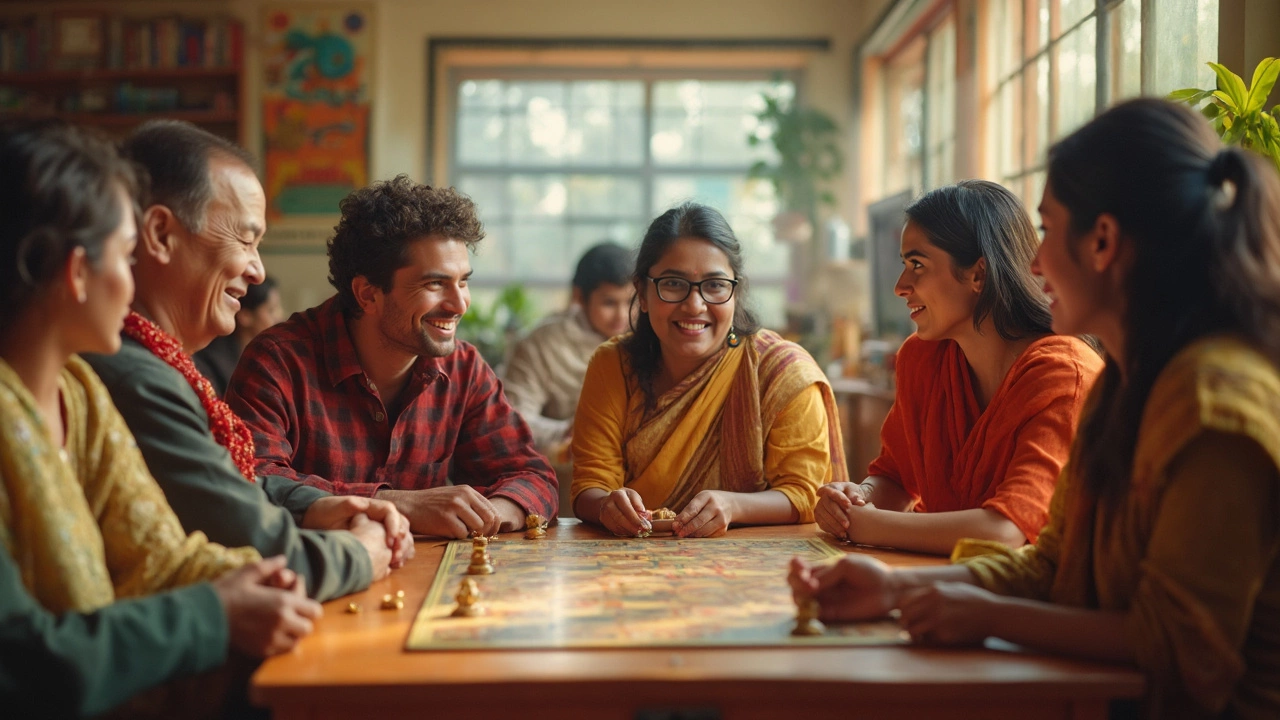You might think social clubs were just an excuse for fancy parties or exclusive get-togethers, but there was a lot more going on behind those closed doors. People leaned on these clubs for friendships, support, and even job opportunities. Some joined because they were new in town and wanted to meet folks with the same interests, while others saw clubs as a way to move up in life, both personally and professionally.
It wasn’t all serious business, though. A lot of clubs started because people just wanted a place to unwind, laugh, and do something different after work. Pool leagues, book clubs, chess nights—whatever the reason, these spots gave people a much-needed break from the daily grind. Wondering if social clubs still matter today? The answer might surprise you. Hang tight as we dig into how clubs were used, why they took off, and what you can actually learn from their story if you’re thinking about trying one out yourself.
- Getting Together: Building Community
- Making Connections: Networking and Influence
- Fun, Leisure, and Escaping Routine
- Tips and Surprising Facts: Social Clubs Then and Now
Getting Together: Building Community
Back in the day, starting a social club was one of the top ways neighbors actually got to know each other. Cities were growing fast during the 1800s and early 1900s, and people wanted real places to connect—not just nod hello on the street. Social clubs stepped in to fill that gap. They brought together folks from the same town, background, or even job, and helped turn strangers into actual friends.
One big draw was feeling like you truly belonged. Clubs gave you a name, a spot at the table, and a group that cared if you showed up. Local clubs, like the Elks or the Rotary, even started running food drives or helping with school fundraisers. Suddenly, giving back and building community went hand-in-hand. Want to know how much these clubs mattered? According to a 1925 membership report, the Lions Club alone had over 40,000 members across hundreds of cities. That’s proof people were hungry for real friendships and teamwork.
Here’s a quick look at what people mostly did together in social clubs:
- Planned weekend picnics and games for families
- Organized neighborhood cleanups
- Ran charity events and helped those in need
- Started sports leagues and music nights
- Created welcoming spaces for newcomers
The real secret sauce wasn’t just about hanging out—it was about making a place feel like home. There’s no better way to say it: clubs made close-knit communities possible, years before social media tried to do the same. Here’s some data showing how much people leaned on these clubs for connection:
| Year | Estimated Social Club Members (US) | Top Club Activity |
|---|---|---|
| 1920 | 3 million | Community Events |
| 1950 | 5.5 million | Neighborhood Projects |
| 1980 | 4.2 million | Charity & Social Gatherings |
The heart of it? These clubs turned random neighbors into a real, supportive community. When someone asks, "What were social clubs used for?", the honest answer is: they built the bonds that held towns and cities together.
Making Connections: Networking and Influence
If you ever wondered why so many go-getters and ambitious folks showed up at social clubs, here’s your answer: networking. These clubs were the LinkedIn of their day. Business deals, lifelong friendships, and even political campaigns often took root around a small table, not in a boardroom.
Take the Rotary Club, for example. Started in 1905 in Chicago, its entire mission was to bring professionals together for both fun and meaningful connections. Back in the early 20th century, studies found that being in a club like Rotary was one of the top unofficial ways people found new jobs or steady business clients. And it wasn't just the Rotary. Whether it was the Freemasons, Lions Club, or your local Elks Lodge, social clubs meant access to new circles you couldn’t tap anywhere else.
Women’s clubs really shook things up in the early 1900s too. These groups weren’t just about tea parties—they gave women a platform to swap skills, push for votes, and even connect with other women who could help them land better jobs or advocate for community causes. One cool stat? By the 1920s, over a million women in the U.S. belonged to a social or civic club.
The influence went deeper than just getting your foot in the door. Leaders of these clubs got a say in local projects, city decisions, and even national trends. If you wanted to shape what happened in your town—or just hear about a job opening before anyone else—being active in a social club could give you a real edge. Here’s a quick look at some numbers that show how important these connections were:
| Club Name | Year Founded | Estimated U.S. Membership (1920s) |
|---|---|---|
| Rotary Club | 1905 | ~30,000 |
| Lions Club | 1917 | ~10,000 |
| Women’s Clubs | 1800s | 1,000,000+ |
If you’re thinking about how this all relates to today, remember: social clubs are still a great way to meet people outside your usual bubble. With the right club, making new connections and opening doors is way easier than going it alone. The secret hasn’t changed over the years—if you want those real opportunities, it helps to show up, join in, and actually get to know people in your social clubs.

Fun, Leisure, and Escaping Routine
At their heart, social clubs were an answer to a simple problem: people needed a place to kick back and escape the boring parts of daily life. Whether it was a bowling night at the local lodge or a weekly card game, these clubs knew how to keep things fun. No surprise, once Prohibition hit in the US during the 1920s, a lot of private clubs became unofficial drinking spots—think of them like the original speakeasies, giving folks a way to unwind and socialize when public bars were shut down.
But these clubs didn’t just offer a good time. They filled gaps in recreation. For example, before public gyms and community centers were common, social clubs often built their own tennis courts, swimming pools, or even small theaters. Members could sign up for dance lessons, sports leagues, or hobby groups—everything from stamp collecting to model trains.
Some clubs, like the YMCA, became so big on recreation that whole cities would join tournaments, especially during the 1950s and 60s. And if you’ve ever wondered if all this fun had real health benefits, studies showed that people who belonged to recreational social clubs reported higher satisfaction and lower stress compared to those who didn’t. Here’s one quick comparison:
| Activity | Average Members per Club (1960s) | Reported Life Satisfaction Increase |
|---|---|---|
| Bowling Leagues | 35 | +18% |
| Book Clubs | 15 | +10% |
| Tennis/Sports Clubs | 50 | +22% |
Want some ideas for mixing a little more leisure into your own life? Here are a few ways classic clubs kept things fresh:
- Rotating event nights—one week trivia, another week karaoke
- Friendly competitions like bake-offs or pool tournaments
- Organizing group outings, from community clean-ups to museum trips
- Low-pressure workshops where members could try out new hobbies
So if you thought a social club was just for mingling, think again. For a lot of folks, it was their main ticket to fun, relaxation, and totally new experiences.
Tips and Surprising Facts: Social Clubs Then and Now
Did you know that in the late 1800s, some social clubs were so exclusive they had waiting lists that stretched for years? The Union Club in New York, for example, only let in the city’s elite, and you had to know the right people just to get your name on the list. And it wasn’t only about who you knew—clubs sometimes picked members based on things like profession or even your family background. Sounds a bit intense, right?
But here’s something practical: most social clubs today are way more open. Anyone with a shared interest can usually join, whether that’s board games, hiking, or food tasting. Thanks to the internet and social media, new clubs pop up almost overnight, and you can find a group for just about any hobby or profession. If you’re curious, search Facebook Groups or Meetup for local social clubs—you’ll likely get more choices than you expect.
Back in the day, joining a club could make or break your career in some cities. The Rotary Club and Lions Club still help people network and volunteer all over the world. These aren’t just old-school traditions. They’re practical stepping stones for both personal growth and making real-world connections.
- Tip: Try a club before fully joining. Many hold open events so newcomers can check things out first. Don’t see one you like? Start your own—a few friends and an idea can turn into something bigger fast.
- Tip: If face-to-face isn’t your thing, look for virtual clubs. Online book discussions, gaming leagues, and skill swaps can be just as social and rewarding as in-person versions.
- Tip: Don’t be shy about asking what your membership pays for. Modern clubs often use dues to fund cool events or support local causes. Make sure you’re getting value and experiences that fit your interests.
So whether you’re looking for camaraderie, career moves, or just something fun to do, social clubs have always been about connecting people. The big change? Today, there’s a club for just about everyone, and it’s never been easier to find your crowd.
